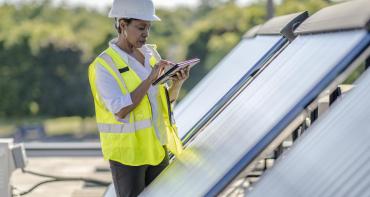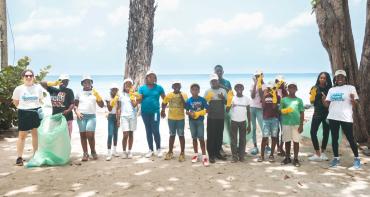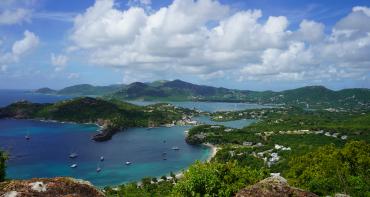The Commonwealth Blue Charter is highlighting case studies from the Commonwealth and beyond, as part of a series to spotlight best practice successes and experiences.

Share your own case study with us
“We inherited these mangroves from our ancestors, providing materials we need to survive. I want to ensure we can pass these forests on to our children.” Joel François, member of the Velondriake management association
Summary
The Tahiry Honko mangrove carbon project is helping build community resilience and provides a model to help tackle climate breakdown by restoring and protecting mangrove forests.
Working in partnership with Blue Ventures, 10 villages within the Velondriake Locally Managed Marine Area (LMMA) in southwest Madagascar are employing a participatory monitoring and management approach as a solution to address degradation and deforestation of mangroves. By verifying the success of this management and monitoring under the Plan Vivo standard, this approach generates carbon credits whose sale can in turn provide sustainable income to both the project villages and the Velondriake management association.

The project promotes locally led conservation, reforestation and sustainable use of over 1,200 hectares of mangroves, alongside initiatives for building improved and alternative livelihoods. It prevents the emission of almost 1,400 tonnes of CO2/year and the funds from carbon credit sales will support management of the LMMA – including fisheries management – and also development of infrastructure and community services.
The issue
Mangroves underpin coastal fisheries, provide vital sources of fuel wood and timber, protect coastal people from extreme weather and act as a key natural climate solution by sequestering globally significant amounts of CO2. Despite their huge value, mangroves are being deforested at an alarming rate. Unabated, mangrove destruction will deprive tens of millions of people of their livelihoods and undermine their well-being. It will exacerbate the global climate emergency we now face, while taking away what vital natural protection coastal people have against it.
Blue Ventures has worked with coastal communities in Madagascar for 15 years, to explore new ways to derive benefits from protecting mangroves, in particular, by capturing the value of mangrove carbon sequestration, as well as indirect fish production.

The response
By protecting forests within the bay from deforestation and restoring areas of degraded mangroves, local communities are able to safeguard the vast amount of carbon stored in the mangrove vegetation and sediments – so called ‘blue carbon’ – that is released as CO2 when mangrove forests are destroyed.
As of October 2019, these avoided emissions have a value on the voluntary carbon market – a value that has now been realised by formal validation of the communities’ efforts by the Plan Vivo standard, enabling the project to start to sell verified blue carbon credits. This will provide regular income to support community conservation efforts within the Velondriake area over the next 20 years.
Partnerships and support
The Tahiry Honko mangrove carbon project is implemented by the Velondriake management association with technical support from Blue Ventures and in close partnership with the Government of Madagascar. The CO2 emission reductions are verified by the Plan Vivo Foundation.
The development of this project is funded by the Darwin Initiative through UK Government funding, the Global Environment Facility (GEF) through its Blue Forests Project, the MacArthur Foundation and by UK Aid.
Results, accomplishments and outcomes
The project promotes locally-led conservation, reforestation and sustainable use of over 1,200 hectares of mangroves, alongside initiatives that build alternative livelihoods – including sea cucumber and seaweed farming and mangrove beekeeping – and support the delivery of health and education services in the region.
By avoiding emissions of over 1,300 tonnes of CO2 per year, Tahiry Honko will provide a regular income through carbon credit sales to support local management of the marine protected area over the next 20 years. Funds will also help finance community development, including the construction of vital infrastructure and supporting health care and education.
One of the most critical parts of the project development process has been the creation of the benefit-sharing arrangement, which is really the key to making these projects successful in the long term. The partner villages decided between them that 50 per cent of the funds should go to the villages within the mangroves, and they have come up with a list of priority social investment projects that will improve their well-being – things like solar panels, safe drinking water projects, improved buildings for schools. Then, 23 per cent of the funds go to the management association to cover the running costs of the locally managed marine area. The remaining 27 per cent goes to the national government, as the other main partner in the project.
Challenges
Mangroves inhabit a unique environment at the transition of land and sea. While this presents many opportunities, from a policy perspective it can also lead to conflicting legislation, because mangroves are at once both terrestrial and marine. To overcome these challenges, it is necessary for projects to work closely with both the relevant authorities – forestry and fisheries.
Also from a policy perspective, in many countries carbon-specific legislation is still in its infancy and is not always fully inclusive of mangroves. While Madagascar now has a relatively mature and clear carbon policy framework, the project did encounter challenges as it was developed simultaneously with this framework. Close collaboration with and support from the national REDD+ body was vital to project success.
Key lessons learnt
The benefit-sharing scenario developed by the partner villages is critical to long-term project success. It takes time to develop clear, transparent benefit-sharing scenarios in a truly participative manner. To ensure that interest in the project is maintained, shorter-term incentives to conservation need to be developed concurrently.
The monitoring and evaluation whose results dictate the number of carbon credits generated – and thus project income – also needs to be completed in a participatory and transparent way. To support this, the project has developed robust, simplified methods for carbon and forest monitoring that can easily be implemented by the community members themselves but that still fulfil the requirements of the Plan Vivo standard. Clear and simple data-sharing methods have also been developed so the Velondriake association can share the results with the often-illiterate project participants.
Lead contact
Lalao Aigrette, Blue Ventures
References and sources
https://blueventures.org/tag/tahiry-honko/
Download this case study (PDF)
View all Case Studies
Media contact
- Josephine Latu-Sanft Senior Communications Officer, Communications Division, Commonwealth Secretariat
- +44 20 7747 6476 | E-mail



